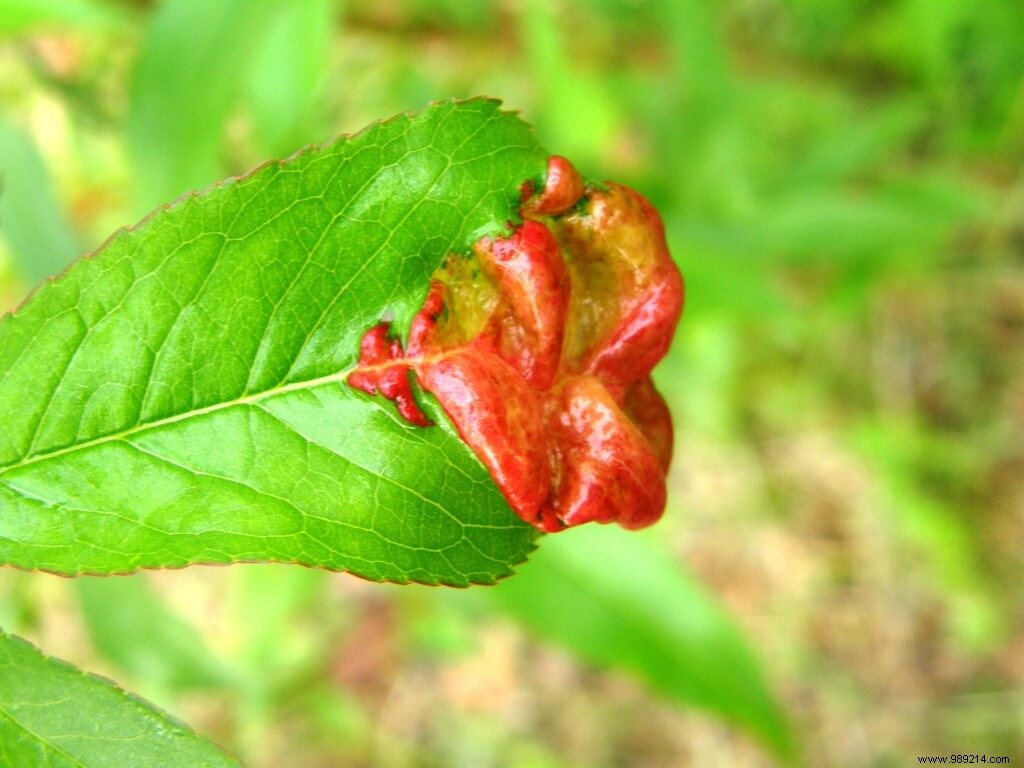Is there something wrong with your peach tree? All it takes is usually a cool, wet spring, unlucky soil, or susceptible varieties, and now peach leaf curl shows the tip of its red, wrinkled nose! The leaves twist and have a blood color, contrasting with the green of the emerging foliage.
If you haven't had the chance to prevent the parasitic attack so common in the peach tree, and called "blister », it is no longer necessary to spray copper, either in the form of sulphate (the famous Bordeaux mixture ), oxychloride, or hydroxide. Indeed, the treatment can only be preventive , at leaf fall and at the end of winter, before the flower bud shows its color.
Especially since these "natural" products are toxic; because everything that is organic, or at least usable in organic farming, is not necessarily ecological. Copper is toxic for mycorrhizae, i.e. soil fungi that live in symbiosis with plants. Bacteria and earthworms do not appreciate the presence of this metal in their biotope either. And of course, without good soil biodiversity, there is a risk of plant malnutrition, which leads to less resistance to parasitic attacks . And on top of all that, copper loves the ground so much it stays there! Hence concentrations that increase from year to year.
So do not bring copper in the spring:it will not save your fruit tree but will be harmful to the environment.
All you have to do is remove the affected leaves by hand and burn them. Follow with a spray of horsetail decoction and things should be back to normal.
If you leave the leaves on the tree, the disease will spread and cause the tree to weaken. The terminal shoots can dry out and the trees usually die in four to five years due to repeated leaf drop. If there is fruit formation, these are affected and fall prematurely. In addition, the tree will bear little or no fruit the following year.


sin blister